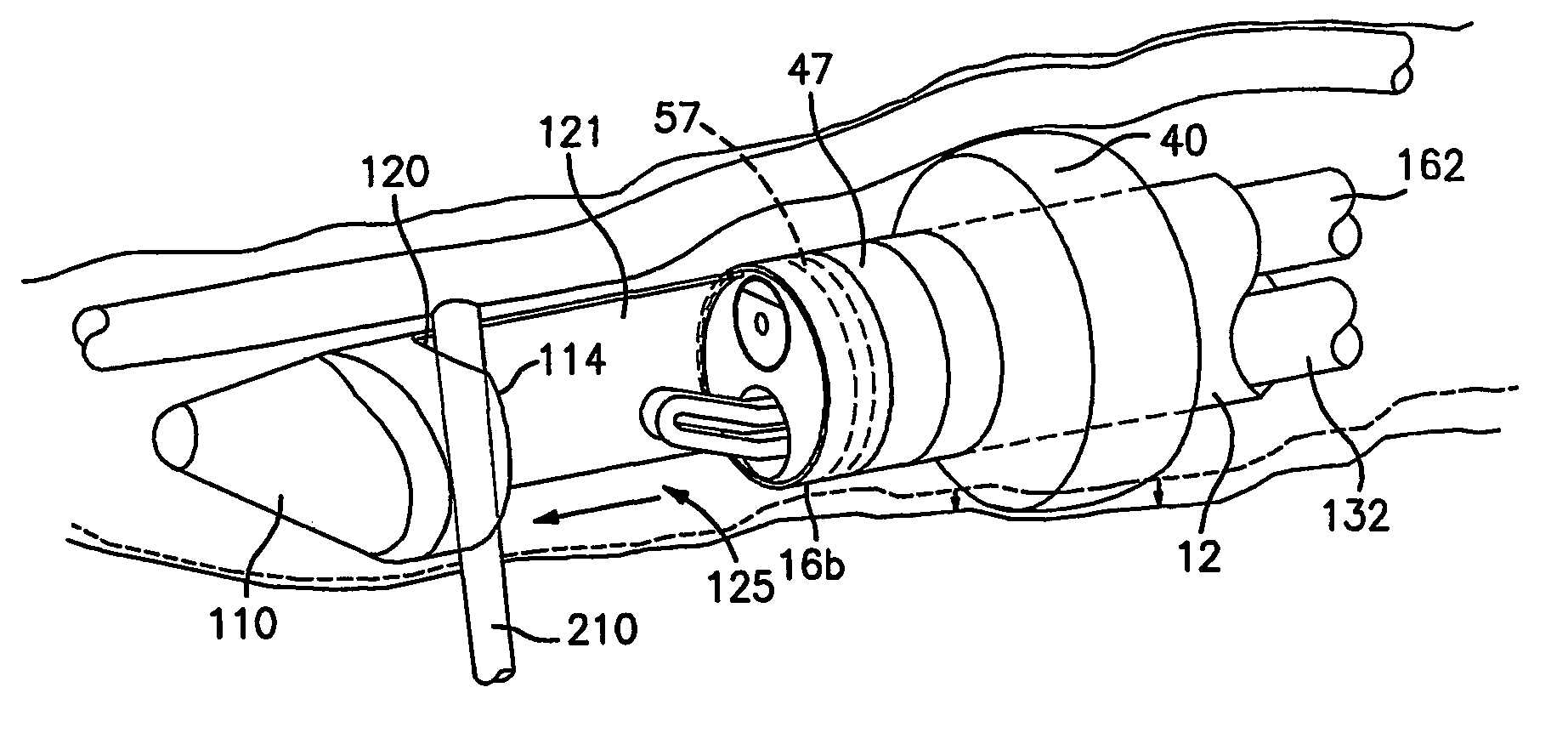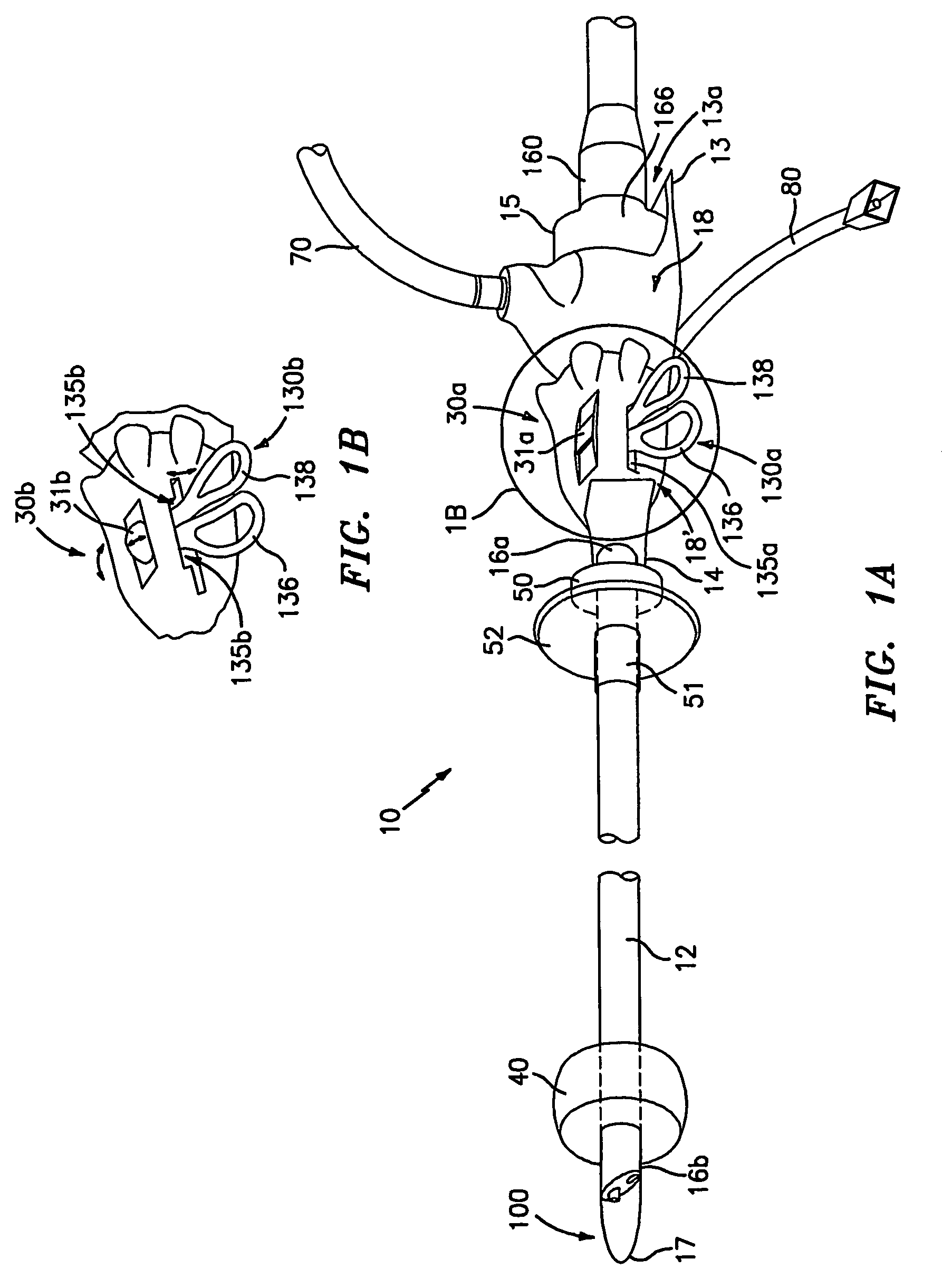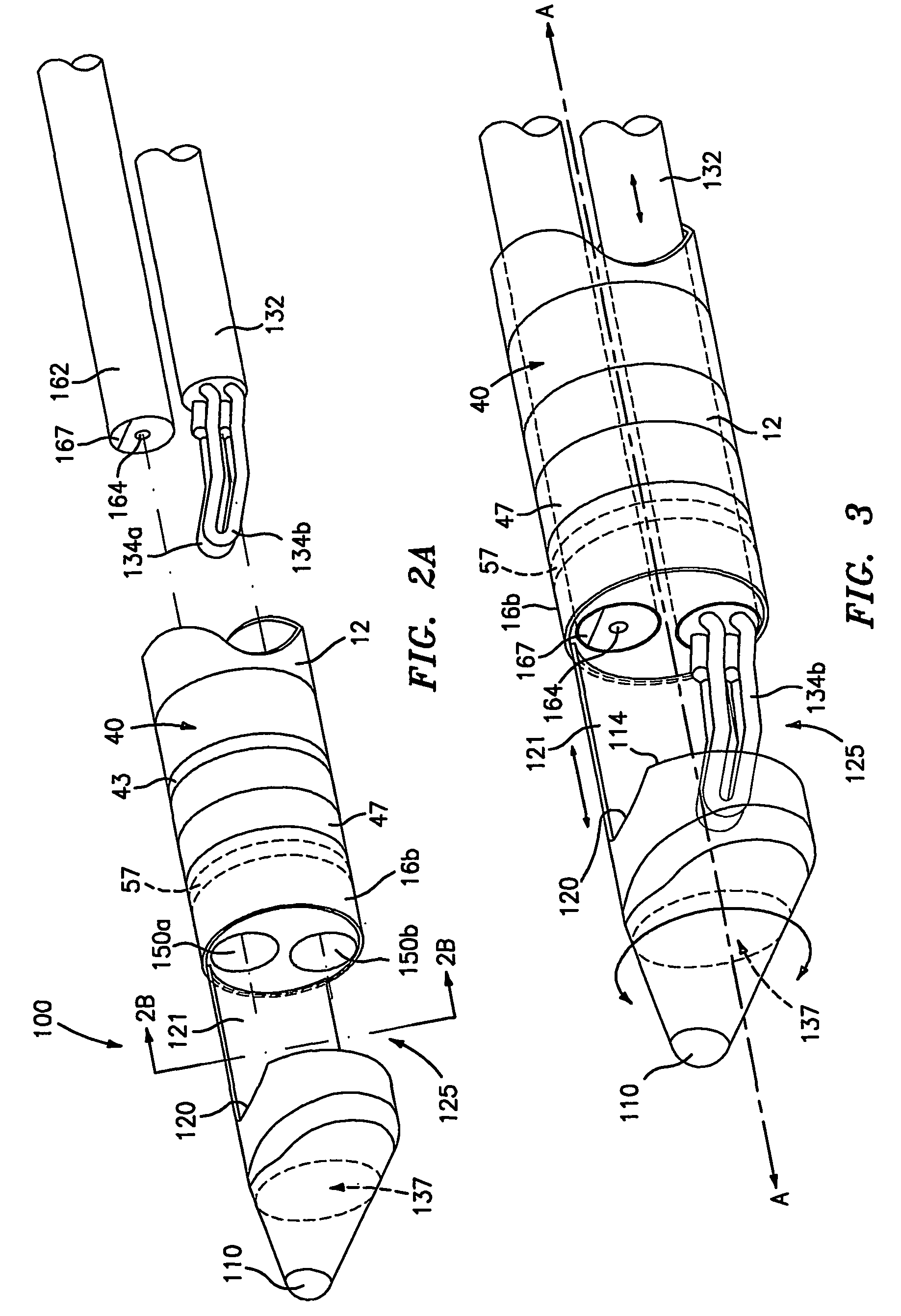[0019]Preferably, the dissecting portion is transparent and / or conical in dimension to facilitate
blunt dissection of surrounding tissue from the vessel. In one embodiment, the tip is extendable along a longitudinal axis defined through the shaft to
expose the cradle section. Advantageously, the cradle section includes a notched portion to facilitate manipulation, orientation and positioning and securement of a vessel
tributary and to facilitate its
ligation and / or separation from the main conduit vessel. The tip and / or the cradle section is preferably rotatable about the
endoscope to assist in the orientation of the cradle section for and during manipulation and separation of the vessel tributaries 360° about the vessel. The tip and / or the cradle section can also be selectively rotatable about the axis of the shaft
[0020]Additional instruments which can be disposed through one or more of the remaining lumens in the shaft can be selected from the group consisting of: ligating instruments, bipolar shears, ultrasonic shears, clip appliers, coagulating instruments,
cutting instruments,
vessel sealing instruments, vessel graspers,
irrigation instruments,
insufflators, suction instruments and combinations of the same. It is envisioned that the additional instruments may be selectively extendable, retractable and / or rotatable relative to the instrument, shaft or
endoscope to facilitate operation thereof.
[0022]In another embodiment, the shaft, preferably a
distal portion thereof, includes a
balloon disposed about the outer periphery thereof and which is selectively
inflatable and / or deflatable. The
balloon allows the operator to grossly dissect surrounding tissue away from the vessel and create and / or maintain a
working space between the vessel and the tissue. The
working space may be insufflated as needed during the harvesting procedure to facilitate
visualization and removal of the vessel.
[0023]Another embodiment of the present disclosure is a surgical instrument for dissecting a vessel from surrounding tissue which includes a housing and an elongated shaft preferably attached to the housing. The shaft includes a plurality of lumens disposed at least partially therethrough. A blunt tip is disposed at a distal end of the shaft and is selectively movable by an
actuator mounted to the housing. The
actuator allows the operator to extend the tip from a first dissecting position wherein the tip is positioned
proximate the distal end of the shaft (i.e., positioned to separate surrounding tissue from the vessel) to at least one additional position distally further from the distal end of the shaft to
expose a cradle section. An endoscope is disposed in at least one of the lumens for
visualization purposes and one or more additional surgical instrument(s) (preferably selected from the
list mentioned above) is disposed in one or more of the remaining lumens.
[0030]The method can also include the steps of: inserting the instrument through an incision in the body; advancing the instrument through the incision and along the vessel utilizing the endoscope to view and / or the blunt tip to dissect surrounding tissue from the vessel; selectively extending the blunt tip to expose the cradle section and position a vessel
tributary; sealing and separating a portion of the
tributary from the vessel; repeating the advancing, extending and treating steps as needed to clear surrounding tissue from the vessel and / or seal or separate additional vessel tributaries; and removing the vessel from the body. Preferably, the advancing step is effected with the blunt tip retracted to reduce
exposure of the cradle section. After the extending step, the method can further include the step of: rotating the cradle section to position tributaries for treatment.
 Login to View More
Login to View More  Login to View More
Login to View More 


